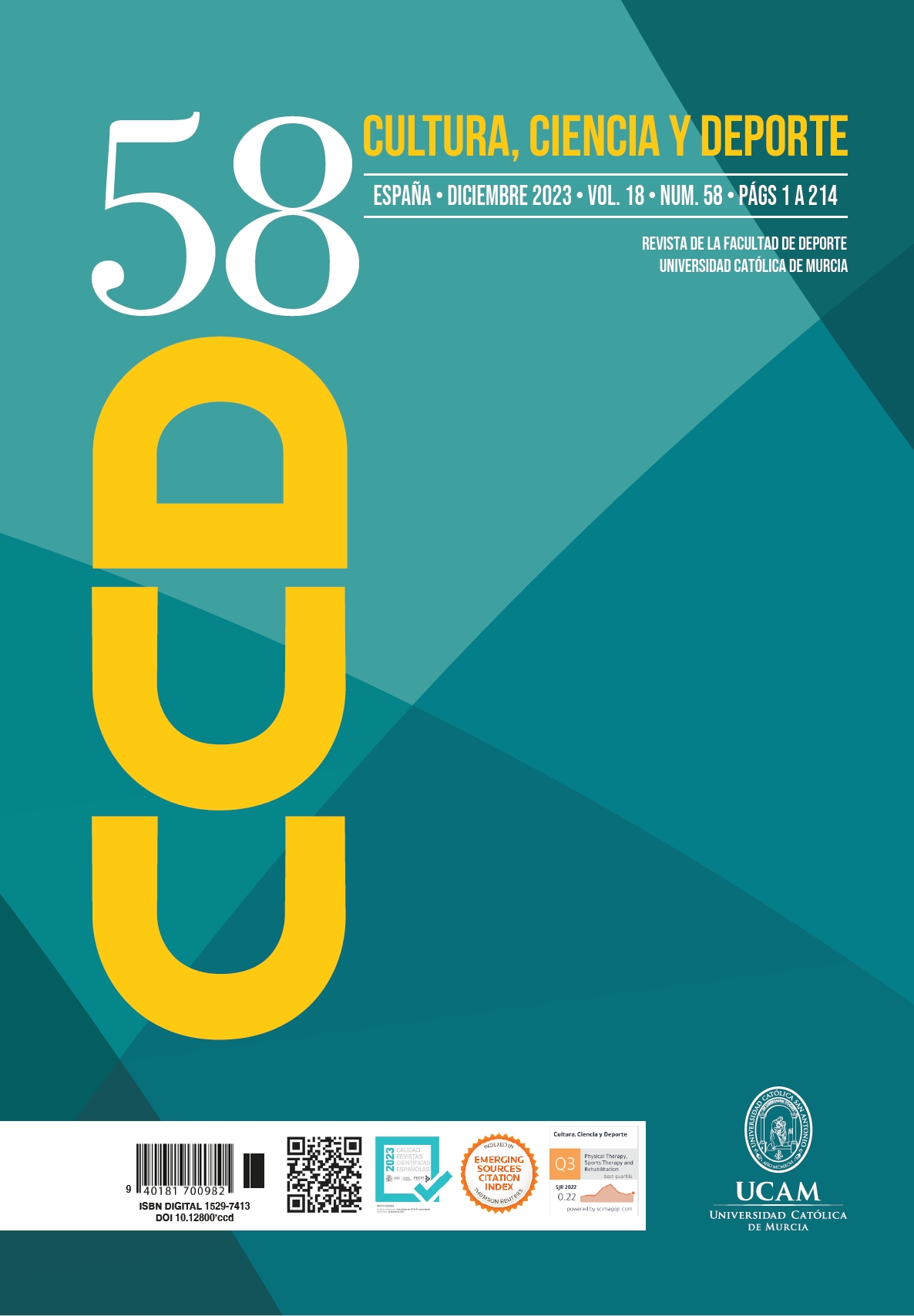The effect of lower limb balance ability and bilateral asymmetry on flamenco footwork
DOI:
https://doi.org/10.12800/ccd.v18i58.2093Resumen
The aim of this study was to investigate the effect of lower limb balance ability and asymmetry on external load during
flamenco footwork. Five professional and five amateur flamenco dancers completed the flamenco Zap-3 footwork
at 160, 180 beats per minute, and at their own the fastest speed possible while wearing triaxial accelerometry (at the
dominant ankle, non-dominant ankle, 5th lumbar and 7th cervical vertebrae). The external load was calculated in the
form of Playerload. The Y-Balance test was used to assess the balance ability, anterior, posteromedial, posterolateral,
composite scores and the asymmetry index were calculated. Amateur dancers are more susceptible to the effect of
balance ability and better balance ability may produce less external load. Having good bilateral balance symmetry between both limbs is a positive effect among flamenco dancers: it reduces overloads at the cervical level and injury risks
and could optimize their percussive tapping technique.
Descargas
Publicado
Cómo citar
Número
Sección
Licencia
Derechos de autor 2023 Creative Commons Attribution License

Esta obra está bajo una licencia internacional Creative Commons Atribución-NoComercial-CompartirIgual 4.0.
Los autores que publican en esta revista están de acuerdo con los siguientes términos:- Los autores conservan los derechos de autor y garantizan a la revista el derecho de ser la primera publicación del trabajo al igual que licenciado bajo una Creative Commons Attribution License que permite a otros compartir el trabajo con un reconocimiento de la autoría del trabajo y la publicación inicial en esta revista.













